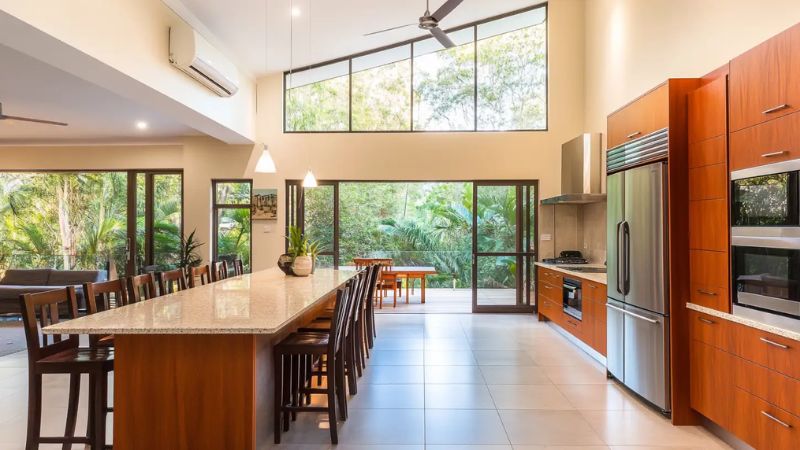Whole of Home Assessment
Get a comprehensive view on your development’s energy efficiency, water usage, and environmental impacts with a Whole of Home assessment.

Introduction to Whole of Home Assessments
What is Whole of Home (WoH)?
Whole of Home (WoH) assessment is a detailed evaluation of the energy performance of an entire home, not just its individual parts. Part of the National Construction Code (NCC) 2022, which applies to new homes, a Whole of Home assessment looks at how different components of the home, such as appliances, lighting, heating, cooling and solar systems, work together to impact overall energy use.
Why Whole of Home Matters For Homeowners
Whole of Home assessments are important because they help homeowners understand the total energy consumption of their home. This assessment is part of the government’s initiative to ensure homes are more energy efficient and sustainable in Australia. Builders and developers need to ensure that their homes meet these standards to comply with regulations and offer better value to buyers.


Understanding the Whole of Home Assessment
What is Assessed?
The Whole of Home Assessment evaluates several key areas of your home’s energy performance. This includes the efficiency of major appliances like hot water systems, heating and cooling units, lighting, and cooking appliances. It also considers the insulation of your home, the efficiency of windows and doors, and the overall design and orientation of the building. The goal is to assess how well these elements work together to reduce the home’s total energy consumption.
The Whole of Home Certificate
After your home has been assessed, you will receive a Whole of Home Certificate. This certificate provides a clear summary of your home’s energy performance and identifies areas where improvements can be made. The certificate is essential for compliance with Australia’s sustainability standards and can also be a valuable tool when selling your home, as it demonstrates the home’s energy efficiency to potential buyers.
Whole of Home Compliance and Requirements
Australian Regulations
All states and territories in Australia support the Whole of Home energy efficiency framework as outlined by the NCC 2022. However, the degree and speed of WoH implementation can vary based on local decisions and industry readiness.
At present, compliance with WoH is mandatory in Queensland, Victoria and the Australian Capital Territory. As building running costs are already accounted for in New South Wales through BASIX, a WoH assessment is not mandatory for NCC 2022 compliance.
When Do You Need a Whole of Home Assessment?
You’ll need a Whole of Home Assessment if you’re building a new home or making significant changes to an existing one. The WoH assessment should be conducted early in the planning stages to ensure that your design meets all necessary energy efficiency targets. Once the assessment is complete, you’ll receive a Whole of Home Certificate, which is required for your building application to be approved.


How Whole of Home Benefits You
Cost Efficiency
A Whole of Home Assessment ensures that your home is designed to use energy more efficiently, leading to significant savings on your energy bills. These savings can add up over time, making your home more cost-effective to run.
Enhanced Property Value
Homes that meet Whole of Home standards are more appealing to buyers because they are designed to be energy-efficient, environmentally friendly and cheaper to run. As buyers are increasingly looking for more of these homes, investing in a Whole of Home certificate can enhance the value of your property.
Environmental Impact
Complying with Whole of Home standards contributes to a more sustainable environment by reducing the energy your home consumes. This helps to lower greenhouse gas emissions and lessens your home’s overall environmental impact.
Our Whole of Home Assessment Process
Our Expertise
Our building sustainability experts at Approved specialise in conducting straightforward, comprehensive and helpful Whole of Home assessments. We use advanced tools and the latest techniques to accurately assess your home’s energy performance and provide actionable recommendations.
Step-by-Step Whole of Home Assessment Process
- First, we collect all the necessary details about your home, including plans, appliance specifications, and insulation details.
- Then, our experts evaluate your home’s energy use across key areas like heating, cooling, lighting, and appliances.
- After the assessment, we provide a detailed report highlighting areas where improvements can be made to enhance energy efficiency.
- Once your home meets the required standards, we issue the Whole of Home Certificate, which you need for your building approval.

Get Your Whole of Home Assessment with Approved
Our team of experts provides thorough Whole of Home Assessments, helping you achieve the highest energy efficiency and comfort in your home. We’re dedicated to making the assessment process as smooth and beneficial as possible, so you can move forward with confidence.



